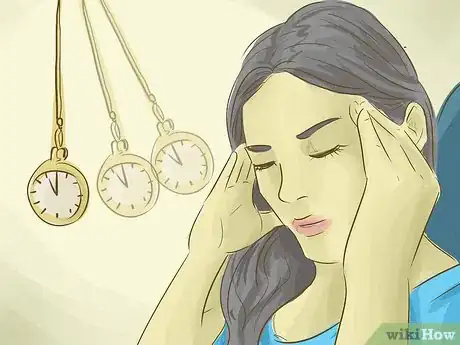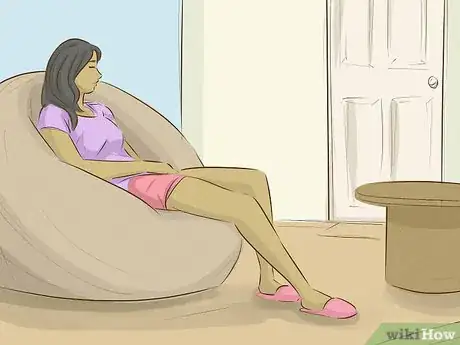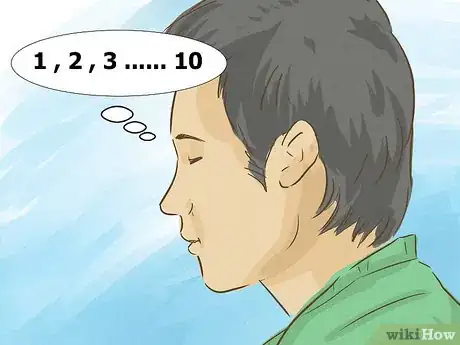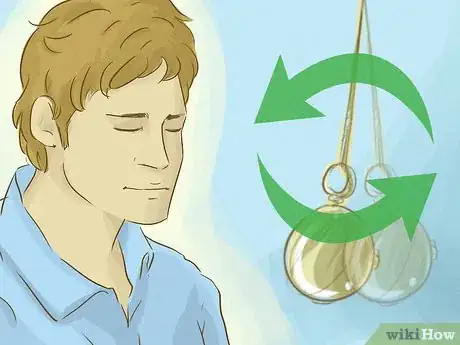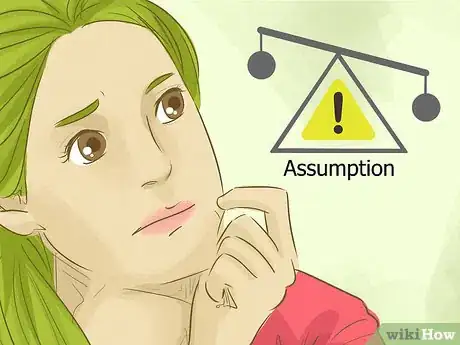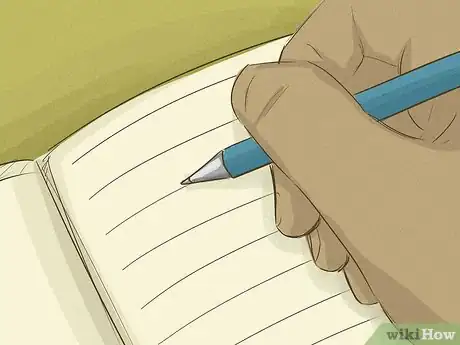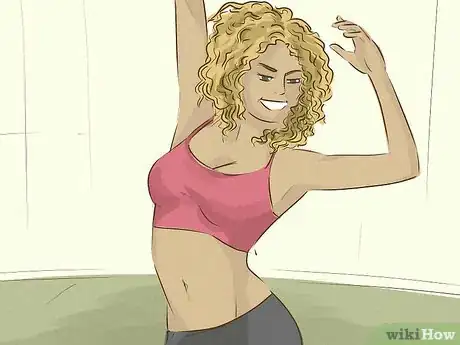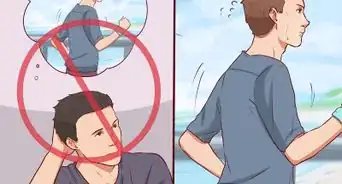This article was co-authored by Michael Stern. Michael Stern is a life coach and the owner of Integral Alignment, a coaching and training business focused on a holistic approach to optimizing one's health, work, love, play, and spirituality. Michael began his professional training in 2011 as an Integral Spiritual Mentor through One Spirit Learning Alliance, and has been certified as both a hatha yoga instructor and an Emotional Intelligence Coach through GolemanEI. In addition to his private 1:1 and groupwork, he has hosted workshops with thought leaders such as Frederic Laloux, Charles Eisenstein, and Thomas Hübl. Michael holds a BA in Spanish Language from Vanderbilt University and lives in Portland, Maine.
There are 13 references cited in this article, which can be found at the bottom of the page.
This article has been viewed 56,630 times.
Sometimes, taking a purposeful vacation inside your head is a great way to build up mental fortitude. Escaping to your mind can help you to launch more creative efforts or become more grounded in each present moment without giving in to distractions. Learn how to escape your mind by channeling your imagination and creativity.
Steps
Relaxing Your Mind
-
1Try deep, abdominal breathing. One of the most effective tools you have for combating stress is your breath. Breathing deeply allows you to activate the body's natural stress response.[1] [2] This technique can be used daily to fend off stress or on the spot during taxing situations.
- Take a seat in a comfortable chair or on a cushion. Place one hand on your abdomen and the other on your chest. Inhale deeply through your nose. The hand on your abdomen should rise; the other hand should remain still. Release the air, exhaling through your mouth. You should feel your abdomen deflating like a balloon. Repeat this exercise for 3 to 5 minutes.[3]
-
2Meditate mindfully. There are various kinds of meditation. Mindfulness meditation is designed to help you become more connected and aware of your body and the environment around you. Practice this form of meditation daily until you are able to continue the practice for longer spans of time and throughout the day.
- To practice mindfulness, find a comfortable seat on a cushion (i.e. back straight legs casually crossed) where you can sit for 10-15 minutes without distractions. Rest your gaze, unfocused, on the floor in front of you. Place your hands on your thighs. Take a deep breath in and release it softly. [4]
- Focus on your breath – in and out. Your attention will wander; that's okay. Simply redirect your attention to your breath once again. Once you have gotten acclimated to focus on your breath, you can move to sensations in your body, sounds, or other aspects of your environment. Whenever your attention wanders, just return to your breath. Do this for 10 to 15 minutes and gradually increase the time-frame.
Advertisement -
3Engage in guided imagery. An effective technique for moving away from the stress and worries of your surroundings and into your inner strength and peace is through visualization, or guided imagery. This is the practice of using words and images to create the state you want.[5]
- For example, you would go to a quiet, distraction-free area and envision a place that brings you calm. Maybe you are lying on a beach. Feel the sand under your toes, the sun in your eyes, and the waves lapping a distance away. Connect with this place using at least three senses. Imagining this brings with it the relaxation you would feel if you really were lying on a beach.
Practicing Self-Hypnosis
-
1Know what self-hypnosis is. Your understanding of hypnosis may come from movies or pop culture when a mysterious proctor helps a person remember something buried deep from the past or find clues to something that has happened. Self-hypnosis is a process of connecting your body to your mind through concentrated effort. In the hypnotic state, you go into a trance, or heightened attention, in which you can use this mind/body connection for a specific purpose.[6]
- People may use self-hypnosis to relieve stress, alleviate pain, or change bad habits. The process can be carried out with a trained therapist, guides, audiotapes, or videos.
- Although you are in a suggestive state, you are always in control, unlike what you may see in movies.
-
2Prepare for self-hypnosis. Change into comfortable clothing, such as a loose-fitting t-shirt and shorts. Move into a pleasant environment which has a comfortable temperature and a door so that you can avoid being distracted for at least half an hour. Turn your phone on silent.
-
3Choose a goal for self-hypnosis. What you choose to focus on during self-hypnosis is your choice. You can use this concentrated effort to relieve a discomfort such as headache or help you stop procrastination. As you escape to your mind using self-hypnosis, think about what you would like the goal of your session to be.[7]
- For the purposes of this example, the goal of self-hypnosis will be relaxation.
-
4Go into a trance. To enter the trance state, call to mind the most elaborate staircase. It leads to your most special place. Close your eyes. Count backwards from 10 to 1, slowly relaxing one part of your body as you count down. Take deep, cleansing breaths as you feel the tension leaving your body with each step you climb down. With each exhale, relax this part of your body.[8]
- 10...Remove the tension from your jaw and face. Rest your tongue at the bottom of your mouth.
- 9...Notice the tension in your forehead and temples drop away.
- 8...Let go of tension in your shoulders and neck.
- 7...Relax your arms.
- 6...Let the tension melt from your chest.
- 5...Inhale, expanding your abdomen as you pull in relaxation with your breath.
- 4...Sink your pelvis into the chair or cushion.
- 3...Remove the tightness from your legs as they no longer have anything to support.
- 2...Wiggle your relaxed toes as you reach your special place.
- 1...
-
5Come out of the trance. You can stay in this relaxed, special state for as long as you like. When you are ready to come back, simply reverse the process and climb back up the staircase as you count upwards to 10. However, leave the tension off. Your body should be limber and refreshed.[9]
-
6Repeat self-hypnosis often. Self-hypnosis is an art in which you become more advanced with practice. Feel confident in the knowledge that you can revisit your favorite place and find renewed peace whenever you choose to descend the staircase again.
Changing Your Perception
-
1Appreciate the world around you. Take more time to relish in the good things. Slow down and delight in the wonders in the world around you every now and then. Being appreciative can actually increase your life satisfaction.[10]
- Go outside and stand in awe of Mother Nature. Listen to the sound of the rustling leaves or the birds in the trees. Feel the sensation of the wind passing over your skin.[11]
- Choose a morning to eat mindfully and linger over breakfast. Inhale the smell of fresh coffee. Notice the colors, textures and smells of the food on your plate. Chew slowly, savoring the taste of each bite. How does your body feel as you satiate your hunger? Are you excited about any particular food more than others?[12]
-
2Challenge assumptions. Humans have a tendency to be biased in their reasoning. Assumptions are one form of biased reasoning in which you believe something to be true based on precedent or your own beliefs. However, this tendency leads to inaccurate and unfair judgments placed on people and situations.
- When you notice yourself making rash judgments about people or events that happen in your life, take a second look. Are you basing your conclusions on hardcore facts? Try to reconsider your initial assumption. Recognize that people and situations have a range of complexity far greater than what meets the eye.
- For example, maybe you've heard a few people complain about a "delinquent" kid on your block. For that reason, you steer clear of him. However, one day you notice him helping an elderly lady unload her groceries from the car. He is polite and responds "yes, ma'am" and "no, ma'am". Now, you don't avoid him so much. You speak cordially when you pass him on the street, and you have found him to be incredibly different than what the neighborhood assumes.
-
3Engage in “back from the future thinking”. You may want to escape your surroundings because your life seems ordinary and colorless. Daring to dream bigger can enrich your outlook and life satisfaction. Give yourself the freedom to envision a future beyond your wildest imagination.
- Think about your life in the next five years. What are you doing? What does your day-to-day routine consist of? What kind of life are your leading?[13] Maybe you see yourself walking across a stage getting a college degree. You are hard-working, compassionate to others, and enthused about using your degree to make a difference.
-
4Create an action plan to reach your dream. Put together a clear action plan for reaching these goals. Now, write down each major goal involved in your future life.[14] What steps must you take to reach them?
- Outline SMART goals (i.e. goals that are specific, measurable, achievable, results-focused, and time-bound) and set a reasonable deadline for reaching them.[15]
- For example, you might need to choose a major that matches your personal values and allows you to truly make a difference. Then, you will need to attend class and study hard. You might also need to forge relationships with your professors and network to find internship and job opportunities. Be as clear and specific in your goal-setting as possible to ensure you meet your objectives.
Unleashing Your Imagination
-
1Journal. Very little can help you escape to your mind than picking up a pen and notebook to write out your deepest thoughts. Journaling can help you find patterns in your thoughts, uncover and understand hidden desires, and cope with life's stressors. [16]
- Start setting aside 20 to 30 minutes each day to write. You can simply talk about what happened that day or write on a theme such as personal growth. It's up to you.
-
2Make art. Go on an adventure inside your head by making something with your hands. Paint. Draw. Sculpt. Build. Cook. Art has the power to lower your rates of stress and anxiety, enhance well-being, and boost immunity. Whether you have something you want to express, or merely want to pass the time, do it with art.
- Research shows that art therapy is beneficial in increasing quality of life, better health, and generating healthy coping.
-
3Dance. Another way to escape to your mind is by expressing yourself through dance. Dancing has both physical and mental health benefits, ranging from a better mood to a stronger heart.[17] You can turn on music or let your surroundings provide the beat. Don't worry about following specific choreography – just move your body according to your thoughts and feelings.
-
4Tell a story. An expressive and potentially cathartic way to escape into your mind is through storytelling. And, no, this isn't just for kids. Gather a small audience of friends and share a cultural tale passed along through generations, make up your own fictional account, or give testimony of a personal experience.
- Not interested in public storytelling? Write down your story - or type it up and publish it!
References
- ↑ Michael Stern. Life Coach. Expert Interview. 8 July 2020.
- ↑ http://www.stress.org/take-a-deep-breath/
- ↑ http://www.webmd.com/balance/stress-management/tc/stress-management-breathing-exercises-topic-overview
- ↑ https://www.psychologytoday.com/blog/the-courage-be-present/201001/how-practice-mindfulness-meditation
- ↑ http://www.allinahealth.org/HealthySetGo/SingleArticle.aspx?id=36507239969
- ↑ http://drmiller.com/learning-center/selfhypnosis/
- ↑ http://www.fammed.wisc.edu/files/webfm-uploads/documents/outreach/im/handout_self_hypnosis_patient.pdf
- ↑ http://www.fammed.wisc.edu/files/webfm-uploads/documents/outreach/im/handout_self_hypnosis_patient.pdf
- ↑ http://www.fammed.wisc.edu/files/webfm-uploads/documents/outreach/im/handout_self_hypnosis_patient.pdf
- ↑ http://greatergood.berkeley.edu/article/item/a_scientific_reason_to_stop_and_smell_the_roses
- ↑ Michael Stern. Life Coach. Expert Interview. 8 July 2020.
- ↑ https://www.psychologytoday.com/blog/mindful-eating/200902/mindful-eating
- ↑ http://www.briantracy.com/blog/financial-success/are-your-dreams-big-enough-dare-to-dream-bigger-dream-come-true-self-made-millionaires-career-goals/
- ↑ Michael Stern. Life Coach. Expert Interview. 8 July 2020.
- ↑ http://www.hr.virginia.edu/uploads/documents/media/Writing_SMART_Goals.pdf
- ↑ http://psychcentral.com/lib/the-health-benefits-of-journaling/
- ↑ http://www.berkeleywellness.com/fitness/active-lifestyle/article/many-health-benefits-dancing




